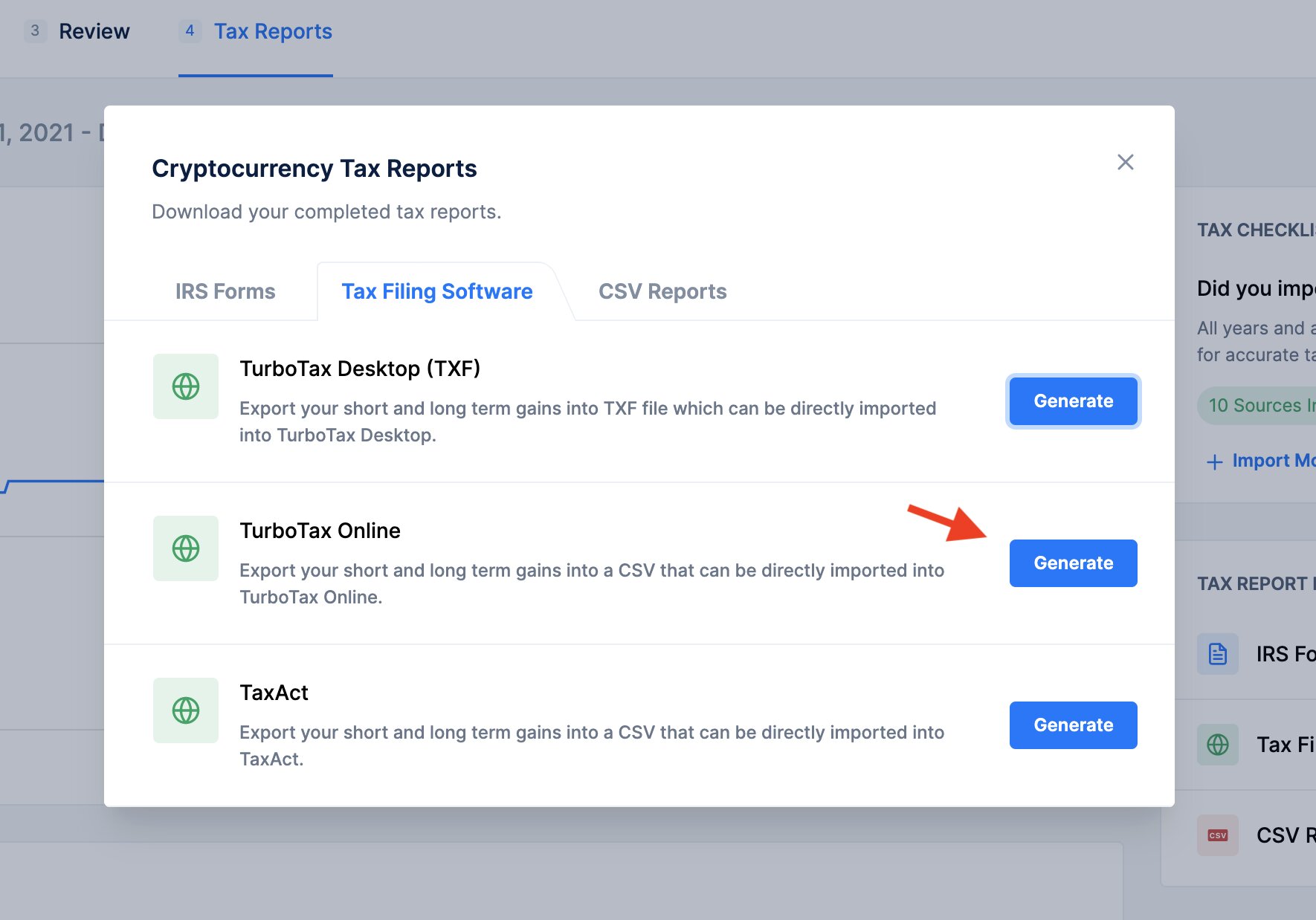Introduction
Cryptocurrency has revolutionized the financial landscape, introducing a decentralized and secure form of digital currency. With its growing popularity, the concept of forking has become prominent. Forking refers to the process of creating a new blockchain diverging from an existing one, resulting in two separate and distinct networks. This phenomenon can have significant implications for the cryptocurrency community, impacting factors such as governance, scalability, and consensus protocols.
In simple terms, a fork occurs when there is a split in the blockchain, resulting in the creation of a new branch. This may happen due to differences in opinion among the cryptocurrency community, such as disagreements over proposed changes or updates to the system. Forks can be categorized into two main types: soft forks and hard forks.
Soft forks are backward-compatible upgrades to the blockchain protocol. They typically introduce minor changes and do not result in the creation of a new coin. Existing nodes on the network can still validate blocks created by nodes running the updated software. However, nodes using older versions of the software may not be able to access certain new features. Soft forks aim to enhance the existing blockchain and improve its overall functionality.
On the other hand, hard forks are significant and substantial changes to the blockchain protocol that are not backward-compatible. They typically result in the creation of a new cryptocurrency, different from the original. Hard forks require all participants to upgrade their software to the new version, as the two blockchains become completely separate entities. This can lead to diverging communities and, in some cases, ideological differences among supporters of the original and new chains.
Understanding the different types of forks and their implications is crucial for anyone involved in the cryptocurrency space. Forks can provide opportunities for innovation and improvement, but they can also introduce uncertainty and potential risks. In this article, we will explore various examples of well-known forks in the cryptocurrency world and delve deeper into their motivations and impacts.
Definition of a Fork
In the context of cryptocurrency, a fork refers to the process of splitting an existing blockchain into two separate chains with distinct transaction histories. It occurs when the consensus protocol governing the blockchain undergoes a significant change, resulting in a divergence of the network. This creates two different versions of the blockchain, each following its own set of rules and protocols.
When a fork occurs, all previous transactions recorded on the blockchain up to that point remain intact. However, from the fork point onward, the two chains will have separate transaction histories. This means that any transactions, balances, or addresses on the original blockchain will no longer be valid on the newly created chain, and vice versa.
The primary causes of forking in cryptocurrency are disagreements within the community regarding upgrades, improvements, or changes to the existing blockchain protocol. These differences in opinion often arise due to differing visions for the future of the cryptocurrency, technical challenges, scaling concerns, or disagreements over governance and consensus mechanisms.
Forks can be broadly classified into two main types: soft forks and hard forks. A soft fork is a backward-compatible upgrade that introduces minor changes to the existing blockchain protocol. It is implemented in such a way that nodes running the new software can still validate blocks created by nodes using older versions. Soft forks do not result in the creation of a new coin and aim to enhance the existing blockchain’s functionality.
On the other hand, a hard fork is a more substantial and significant change to the blockchain protocol that is not backward-compatible. It requires all participants in the network to upgrade their software to the new version. Hard forks often result in the creation of a new cryptocurrency, distinct from the original. This can lead to the formation of a separate community with different goals, values, and governance structures.
Forks in cryptocurrency are not uncommon and can have significant implications for investors, miners, developers, and users. They can create opportunities for innovation and provide options for users with different preferences and objectives. However, forks can also introduce challenges, such as network fragmentation, community divisions, and uncertainties regarding the value and acceptance of the new coin.
Understanding the nature and dynamics of forks is essential for anyone involved in the cryptocurrency space. It allows individuals to make informed decisions, adapt to changes in the network, and navigate the complexities that arise from forks in the blockchain.
Types of Forks in Cryptocurrency
When it comes to forking in the realm of cryptocurrency, there are two primary types: soft forks and hard forks. These classification terms refer to the extent of the changes made to the existing blockchain protocol and the level of compatibility between the old and new versions.
1. Soft Forks: A soft fork is a type of upgrade to the blockchain that is backward-compatible, meaning it maintains compatibility with previous versions of the blockchain protocol. In a soft fork, changes are made to the rules without invalidating the previous blocks and transactions. This means that nodes running the updated software can still accept blocks from nodes using the older version. However, nodes running the older version may not recognize certain new features or blocks created by the updated software.
The aim of a soft fork is generally to introduce minor changes that enhance the functionality or security of the blockchain. These changes typically include tightening rules or adding new validation requirements. A soft fork does not result in the creation of a new cryptocurrency but instead aims to improve the current one.
2. Hard Forks: Unlike soft forks, hard forks involve substantial and non-backward-compatible changes to the existing blockchain protocol. In a hard fork, the rules of the blockchain are altered to such an extent that nodes using the old version of the software are no longer able to validate new blocks created by nodes using the updated software.
Hard forks often result in the creation of a new and separate cryptocurrency, distinct from the original one. This means that after a hard fork, there are two parallel blockchains, each with its own set of rules, transaction history, and community. Participants in the network are required to upgrade their software to the new version to continue participating in the newly forked blockchain.
Hard forks can occur due to various reasons, including disagreements within the community regarding protocol changes, governance issues, or ideological divergences. They can be planned, with a set date and clear intentions, or they can be contentious, resulting from irreconcilable differences among community members.
Both soft forks and hard forks play a significant role in the development and evolution of blockchain networks. While soft forks aim to introduce incremental improvements, hard forks provide opportunities for more substantial changes and the exploration of different paths. It is important for participants in the cryptocurrency space to understand the differences between these two types of forks and their implications on the network and community.
Soft Forks
A soft fork is one of the two types of forks in the cryptocurrency world, the other being hard forks. Unlike hard forks, soft forks are backward-compatible upgrades to the existing blockchain protocol. This means that nodes running the updated software can still accept blocks from nodes using the older version, maintaining compatibility between the two versions.
In a soft fork, changes are made to the rules of the blockchain in a way that tightens or adds new requirements without invalidating the previous blocks and transactions. This ensures that the entire transaction history remains intact. However, nodes running the older version may not be able to validate certain new features or blocks created by the updated software, which may result in limited functionality for those nodes.
Soft forks are usually implemented to improve the existing blockchain’s functionality, enhance security, or address specific technical challenges. By implementing new rules and requirements, soft forks aim to create a more efficient and robust network. However, since the changes introduced in a soft fork are not drastic, it does not result in the creation of a new cryptocurrency.
One example of a significant soft fork in the world of cryptocurrency is the implementation of Segregated Witness (SegWit) on the Bitcoin network. SegWit was intended to address the scalability issue of Bitcoin by separating the transaction signatures (witness data) from the transaction data, allowing more transactions to be included in each block.
With SegWit, nodes running the updated software could validate blocks that included both segregated witness transactions and non-segregated witness transactions. However, nodes using older versions of the software could still validate blocks that only included non-segregated witness transactions. This backward compatibility ensured a smooth transition and maintenance of the existing blockchain while introducing an improvement to the network’s scalability and transaction capacity.
Soft forks provide a way for blockchain networks to implement upgrades and improvements without causing major disruptions or fragmenting the network. However, it is essential to note that soft forks can also introduce challenges, such as the potential for decreased transparency and centralization, especially if there is a lack of consensus among network participants regarding the soft fork implementation.
Overall, soft forks offer a method to incrementally enhance the functionality and efficiency of blockchain networks while ensuring compatibility with older versions. They play a significant role in the continuous development and evolution of cryptocurrencies, allowing for the implementation of new features and improvements without completely splitting the network.
Hard Forks
A hard fork is a significant and non-backward-compatible change to the existing blockchain protocol, resulting in the creation of a new and separate blockchain. Unlike soft forks, hard forks require all participants in the network to upgrade their software to the new version to remain compatible with the forked blockchain.
Hard forks occur when there is a fundamental disagreement within the community regarding the direction of the cryptocurrency, protocol changes, governance, or other critical aspects of the blockchain. These differences in opinion often lead to a split in the community, where one group favors the original blockchain and another supports the new chain created by the hard fork.
When a hard fork is initiated, the existing blockchain is duplicated, creating two parallel chains. From the fork point onward, both chains have their own set of rules, transaction histories, and communities. Existing balances, addresses, and transactions on the original blockchain are no longer valid on the new chain.
Hard forks are often accompanied by the creation of a new cryptocurrency that is distinct from the original. The new cryptocurrency can have its own name, ticker symbol, and unique features. However, holders of the original cryptocurrency receive a corresponding amount of the new cryptocurrency based on their existing holdings at the time of the fork. This means that if you held a certain amount of the original cryptocurrency, you would receive an equivalent amount of the new cryptocurrency on the forked chain.
One notable example of a hard fork is the creation of Bitcoin Cash (BCH) from the original Bitcoin (BTC) blockchain in 2017. Bitcoin Cash was created to address the scalability issue of Bitcoin by increasing the block size limit from 1MB to 8MB, allowing for more transactions to be processed per block.
After the hard fork, Bitcoin Cash became a separate cryptocurrency with its own community, development team, and roadmap. While both Bitcoin and Bitcoin Cash share a common transaction history up to the fork point, they have since diverged and evolved independently.
Hard forks can be planned or contentious. Planned hard forks involve a clear set of intentions and often have a predetermined date for implementation. Contentious hard forks, on the other hand, can arise from deep-seated disagreements within the community, leading to a split in consensus and a subsequent fork without a clear majority of support.
While hard forks can introduce innovation and address critical issues within the blockchain, they also have the potential to cause uncertainty, fragmentation of the community, and volatility in the market. However, they provide an avenue for different visions and ideologies to flourish, allowing participants to choose which chain aligns with their preferences and objectives.
Understanding hard forks is crucial for participants in the cryptocurrency space, as it enables informed decision-making and adaptation to changes in the network. It is essential to assess the motivations, development teams, and communities behind the new chain before deciding to participate or hold assets on the forked blockchain.
Examples of Popular Forks in Cryptocurrency
Forks in the cryptocurrency world have been instrumental in shaping the landscape and providing new options for users. Let’s explore some notable examples of popular forks that have garnered attention and made an impact in the industry.
1. Bitcoin Cash (BCH): Bitcoin Cash is one of the most well-known and successful forks in the cryptocurrency space. It emerged in 2017 as a result of a hard fork from the original Bitcoin (BTC) blockchain. Bitcoin Cash aimed to address the scalability issue of Bitcoin by increasing the block size limit from 1MB to 8MB, allowing for more transactions to be processed in each block. This fork created a new cryptocurrency, Bitcoin Cash, which has gained a significant following and is seen as an alternative to Bitcoin.
2. Ethereum Classic (ETC): Ethereum Classic is a result of a contentious hard fork that occurred in 2016. The fork was a response to the infamous DAO hack, where a substantial amount of Ethereum (ETH) was stolen due to a vulnerability in the decentralized autonomous organization (DAO) smart contract. The hard fork led to a split in the Ethereum community, with some participants supporting the hard fork to revert the hack, resulting in the continuation of the main Ethereum blockchain (ETH). Ethereum Classic emerged as the continuation of the original Ethereum blockchain, as a stance against any kind of censorship or tampering with transactions.
3. Litecoin Cash (LCC): Litecoin Cash is a hard fork of Litecoin (LTC) that occurred in 2018. This fork aimed to create a faster and more secure digital currency based on the Litecoin blockchain. Litecoin Cash increased the block size and employed a new mining algorithm, allowing for increased transaction throughput and potential benefits for miners. It is important to note that Litecoin Cash is a separate cryptocurrency, and holding Litecoin did not automatically entitle users to Litecoin Cash.
4. Bitcoin SV (BSV): Bitcoin SV emerged in 2018 as a hard fork from the Bitcoin Cash blockchain, led by entrepreneur Craig Wright and his supporters. The fork was triggered by disagreements within the Bitcoin Cash community regarding the future protocol developments, block size, and overall vision. Bitcoin SV stands for “Satoshi Vision” and aims to restore the original Bitcoin protocol as envisioned by its pseudonymous creator, Satoshi Nakamoto. The primary focus of Bitcoin SV is on scalability, security, and providing a stable and reliable platform for businesses and developers.
These are just a few examples of popular forks in the cryptocurrency world. Forks can provide opportunities for innovation, address critical issues, and offer different approaches to blockchain technology. However, it is important to approach forks with caution and conduct thorough research to understand the motivations behind them, the development teams involved, and the community support. Investors and users should exercise due diligence and assess the potential risks and benefits before participating in or holding assets on a forked blockchain.
Bitcoin Cash (BCH)
Bitcoin Cash (BCH) is a notable example of a successful hard fork in the world of cryptocurrency. It emerged in 2017 as a result of a contentious split from the original Bitcoin (BTC) blockchain. Bitcoin Cash aimed to address the scalability issue of Bitcoin by increasing the block size limit from 1MB to 8MB, allowing for more transactions to be processed in each block.
One of the main motivations behind the creation of Bitcoin Cash was to improve transaction speed and lower fees. By increasing the block size, Bitcoin Cash aimed to reduce congestion on the network and provide a more efficient and cost-effective payment system. The larger block size allowed for faster confirmation times and the potential for greater scalability, ensuring Bitcoin Cash could handle a larger volume of transactions compared to Bitcoin.
After the hard fork, Bitcoin Cash became a separate cryptocurrency with its own development team, community, and roadmap. Holders of Bitcoin at the time of the fork received an equivalent amount of Bitcoin Cash, based on the amount of Bitcoin they held. This distribution ensured that existing Bitcoin holders had a stake in the newly created cryptocurrency, providing them with an immediate financial interest in the success of Bitcoin Cash.
Bitcoin Cash has gained significant traction and widespread acceptance, positioning itself as an alternative to Bitcoin. Its larger block size and focus on fast, low-cost transactions have attracted merchants and users seeking a more efficient payment system. Bitcoin Cash has also gained adoption in the decentralized finance (DeFi) space, with various applications and platforms supporting its use.
However, it is worth noting that Bitcoin Cash has also faced criticism and challenges along the way. The contentious nature of its fork from Bitcoin led to debates within the cryptocurrency community, and some voiced concerns about centralization and the influence of a few key actors. Bitcoin Cash has also experienced its own scalability issues as transaction volumes increased, requiring further updates and improvements to its protocol.
Despite the challenges, Bitcoin Cash remains an influential cryptocurrency in the industry. Its larger block size and focus on scalability continue to resonate with users seeking fast and affordable transactions. Bitcoin Cash has also demonstrated resilience in terms of market capitalization and liquidity, making it a popular choice among investors and traders.
As with any cryptocurrency, understanding the underlying technology, development roadmap, and overall community support is vital when considering involvement with Bitcoin Cash. Users and investors should conduct thorough research and analysis to assess the potential risks and benefits associated with this alternative version of Bitcoin.
Ethereum Classic (ETC)
Ethereum Classic (ETC) is a cryptocurrency that emerged as a result of a contentious hard fork from the Ethereum (ETH) blockchain in 2016. The fork was prompted by a significant event known as the DAO hack, where a decentralized autonomous organization (DAO) built on the Ethereum network was exploited, resulting in the theft of a substantial amount of Ether.
Following the hack, the Ethereum community was divided on how to respond. One group supported a hard fork to revert the transactions and return the stolen funds to their original owners. This resulted in the continuation of the Ethereum blockchain as Ethereum (ETH), while another group believed in the principle of immutability and opposed any form of censorship or alteration of transactions. This group continued with the original Ethereum blockchain, leading to the creation of Ethereum Classic (ETC).
Ethereum Classic maintains the original Ethereum blockchain and transaction history, highlighting the importance of preserving the integrity of the blockchain and the concept of “code is law.” The community behind Ethereum Classic believes that transactions on the blockchain should be irreversible, as any interference could compromise the decentralization and trustless nature of the technology.
Ethereum Classic serves as an alternative to Ethereum and has its own development team, community, and roadmap. It has been adopted by users and developers who align with the principles of immutability and value the preservation of the original Ethereum blockchain. Ethereum Classic supports smart contracts and decentralized applications (DApps), providing a platform for developers to build and deploy decentralized applications.
Although Ethereum Classic shares a common history with Ethereum up until the fork, the two cryptocurrencies have diverged in terms of their development and community support. Ethereum Classic has faced some challenges, including the need to maintain network security and address scalability concerns. However, it continues to maintain a loyal following and has proven to be resilient, with a notable market presence and liquidity.
Ethereum Classic’s existence highlights the importance of decentralized decision-making within blockchain communities. The hard fork and the subsequent creation of Ethereum Classic allowed individuals to choose between different ideologies and visions for the future of the Ethereum network.
When considering involvement with Ethereum Classic, it is essential to understand the nuances of its history, the development team’s goals, and the community’s ongoing support. Users and investors should carefully assess the potential risks and benefits associated with Ethereum Classic, recognizing that it is a separate cryptocurrency with its own unique characteristics and challenges.
Conclusion
Forks play a significant role in the world of cryptocurrency, offering opportunities for innovation, addressing critical issues, and allowing for different visions to be explored. While forks can introduce challenges, such as network fragmentation and community divisions, they also provide choices for users and investors, allowing them to align with projects that best suit their preferences and objectives.
Understanding the different types of forks, such as soft forks and hard forks, is crucial for anyone involved in the cryptocurrency space. Soft forks introduce backward-compatible upgrades to the blockchain protocol, aiming to improve functionality and security. On the other hand, hard forks result in the creation of a new blockchain and cryptocurrency, offering substantial changes that are not compatible with the older version.
Examples of popular forks, such as Bitcoin Cash (BCH) and Ethereum Classic (ETC), demonstrate the impact and influence these forks can have. Bitcoin Cash sought to improve scalability and reduce transaction fees, while Ethereum Classic aimed to preserve the immutability and principles of the original Ethereum blockchain.
It is important to conduct proper research and analysis when considering involvement with a forked blockchain. Factors such as the development team, active community support, roadmap, and the potential risks and benefits should all be carefully considered.
The cryptocurrency landscape continues to evolve, and forks are likely to remain a part of this evolution. As blockchain technology advances and new challenges arise, forks can serve as mechanisms for progress, allowing for experimentation, adaptation, and growth within the cryptocurrency ecosystem.
Whether it is a soft fork or a hard fork, these events shape the future of cryptocurrencies, adding diversity and choice to the market. By staying informed and understanding the implications of forks, individuals can navigate the ever-changing cryptocurrency landscape with confidence and make informed decisions to maximize their participation and potential in this exciting and dynamic industry.

























